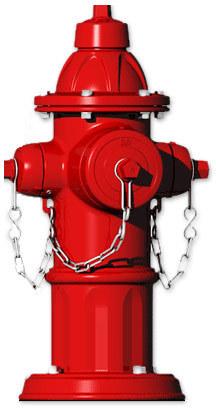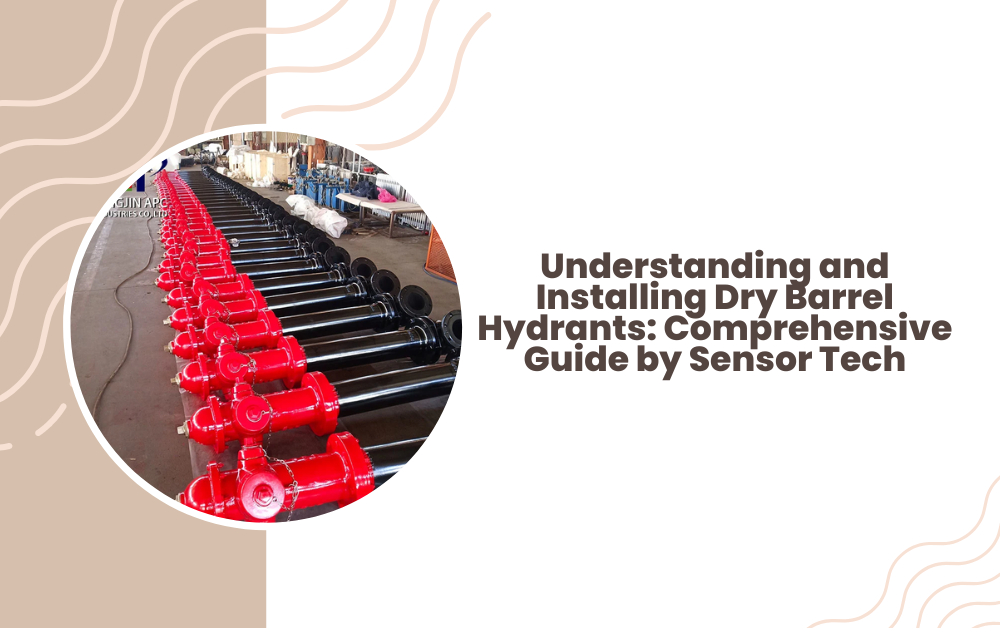Introduction to Dry Barrel Hydrants
A dry barrel hydrant is an essential component of fire safety systems, particularly in regions with cold climates. Unlike wet barrel hydrants, dry barrel hydrants do not have water in the barrel when not in use, preventing the water from freezing during cold weather. Sensor Tech, a leader in fire safety equipment, manufactures high-quality dry barrel hydrant that are designed to provide reliable performance and durability in harsh conditions. Understanding the features, benefits, installation, and maintenance of dry barrel hydrants is crucial for ensuring optimal fire protection and safety.
Features of Dry Barrel Hydrants
Dry barrel hydrants from Sensor Tech come with a range of features designed to enhance their functionality and reliability. One of the primary features is the valve located below the frost line, which ensures that the water remains in the underground pipes, preventing it from freezing in the hydrant. These hydrants are constructed from durable materials like ductile iron and stainless steel, which can withstand extreme weather conditions and prolonged use. Sensor Tech’s dry barrel hydrants also have breakaway components that prevent damage if the hydrant is struck by a vehicle. Additionally, the hydrants feature multiple outlets, allowing firefighters to connect hoses quickly and efficiently during emergencies. These features make Sensor Tech’s dry barrel hydrants a preferred choice for many municipalities and fire departments.
Benefits of Using Dry Barrel Hydrants
There are several benefits to using dry barrel hydrants, especially those manufactured by Sensor Tech. Firstly, their design prevents water from remaining in the barrel, reducing the risk of freezing and ensuring reliable performance in cold climates. This feature is particularly important in preventing operational failures during emergencies. Secondly, the robust construction of Sensor Tech hydrants ensures longevity and reliability, reducing the need for frequent replacements or repairs. The breakaway design also minimizes damage costs if the hydrant is accidentally hit by a vehicle. Furthermore, the multiple outlet design provides greater flexibility and efficiency in firefighting operations. Overall, dry barrel hydrants offer significant advantages in terms of reliability, durability, and ease of maintenance.
Installation Process of Dry Barrel Hydrants
Site Preparation
Proper site preparation is the first step in the installation process of a dry barrel hydrant. Choose a location that meets the requirements of local fire codes and regulations, ensuring that the hydrant will be easily accessible for firefighters. The site should be clear of any obstructions and should allow for easy maintenance and testing. Once the location is selected, gather all the necessary tools and materials, including the hydrant, pipes, wrenches, and sealing compounds. Sensor Tech provides a detailed list of required items in their installation manual, ensuring you have everything needed for a smooth installation process.

Digging the Trench
The next step involves digging a trench for the water supply line. The trench should be deep enough to protect the pipes from external damage and ensure proper water flow. Typically, the depth of the trench will vary based on local codes, but a general guideline is to dig at least 1.5 to 2 feet deep. Ensure the trench is wide enough to accommodate the water supply line and allows for easy maneuvering during installation. Using a trenching machine can help maintain consistent depth and width, making the process more efficient. Safety precautions should be taken to avoid any accidents while digging the trench.
Laying the Water Supply Line
Once the trench is ready, the water supply line can be laid. Use high-quality pipes that are suitable for the water pressure in your area. Sensor Tech advises using ductile iron pipes for their strength and durability. Connect the pipes securely using appropriate fittings and ensure that all connections are tight to prevent leaks. It is essential to check the alignment of the pipes and make any necessary adjustments before proceeding. Properly laying the water supply line is critical for the effective operation of the dry barrel fire hydrant.
Installing the Hydrant
With the water supply line in place, it’s time to install the dry barrel fire hydrant. Position the hydrant over the water supply line, ensuring that it is upright and level. Connect the hydrant to the supply line using a flange or other suitable connection method as specified by Sensor Tech. Tighten all bolts and fittings securely to prevent any leaks. Once the hydrant is connected, backfill the trench with soil, compacting it in layers to avoid any settling issues. The hydrant should be installed at a height that allows easy access for firefighters and maintenance personnel.
Testing for Leaks
After the hydrant is installed, it is crucial to test the system for any leaks. Open the hydrant valves slowly to allow water to flow into the system. Check all connections, including the supply line and hydrant base, for any signs of leakage. Sensor Tech recommends using a pressure gauge to ensure that the water pressure is within the specified range. If any leaks are detected, tighten the connections or replace faulty components as needed. Proper testing is essential to ensure the hydrant operates efficiently during an emergency.
Performing a Flow Test
A flow test is necessary to verify that the hydrant delivers the required water flow and pressure. Connect a flow meter to one of the hydrant outlets and open the valve fully. Measure the flow rate and pressure, comparing them to the specifications provided by Sensor Tech. The flow test ensures that the hydrant can supply sufficient water to combat a fire effectively. If the flow rate or pressure is below the required levels, investigate the cause and make necessary adjustments. Regular flow testing should be part of the hydrant’s maintenance routine.
Maintenance of Dry Barrel Hydrants
Regular Inspections
Regular inspections are crucial for ensuring the proper functioning of dry barrel fire hydrants. Inspections should be conducted at least twice a year to check for any signs of wear, damage, or malfunction. During the inspection, check the hydrant for leaks, ensure that all valves are working correctly, and verify that the hydrant is easily accessible. Sensor Tech recommends a comprehensive checklist to guide the inspection process, ensuring that all critical components are evaluated.
Cleaning and Lubrication
Keeping the dry barrel fire hydrant clean and well-lubricated is essential for its longevity and performance. Remove any debris or dirt that may have accumulated around the hydrant, and clean the exterior with a mild detergent. Lubricate the moving parts, such as the operating nut and stem, to ensure smooth operation. Sensor Tech provides specific guidelines on the types of lubricants to use and the frequency of application. Regular cleaning and lubrication help prevent corrosion and mechanical issues, extending the life of the hydrant.
Testing and Flow Verification
In addition to regular inspections, periodic testing is necessary to verify the hydrant’s performance. Conduct flow tests to ensure that the hydrant can deliver the required water flow and pressure. Use a flow meter to measure the output and compare it to the specifications provided by Sensor Tech. If the flow rate or pressure is below the required levels, investigate the cause and make necessary adjustments. Regular testing helps identify potential issues early, allowing for timely maintenance and repairs.
Repairs and Replacements
Over time, some components of the dry barrel fire hydrant may require repairs or replacements. Common issues include leaks, damaged valves, and worn-out gaskets. Sensor Tech provides replacement parts and detailed instructions for common repairs, ensuring that maintenance personnel can address issues promptly. It is essential to use genuine Sensor Tech parts to maintain the hydrant’s performance and reliability. Timely repairs and replacements prevent minor issues from becoming major problems, ensuring the hydrant remains operational when needed.
Conclusion
Dry barrel fire hydrants are a vital part of any fire safety system, especially in regions with cold climates. Sensor Tech’s dry barrel fire hydrants are designed for durability, reliability, and ease of use, making them an excellent choice for fire departments and municipalities. Understanding the features, benefits, and proper installation and maintenance of these hydrants is essential for ensuring optimal fire protection. By following the guidelines provided by Sensor Tech, you can ensure that your dry barrel fire hydrant operates efficiently and remains in top condition. Regular inspections, cleaning, lubrication, and testing are crucial for maintaining the hydrant’s performance and reliability. Trust Sensor Tech for high-quality fire safety solutions and expert guidance in managing your dry barrel fire hydrants.
Note :- To Read More Articles Visit on- logicallyblogs

